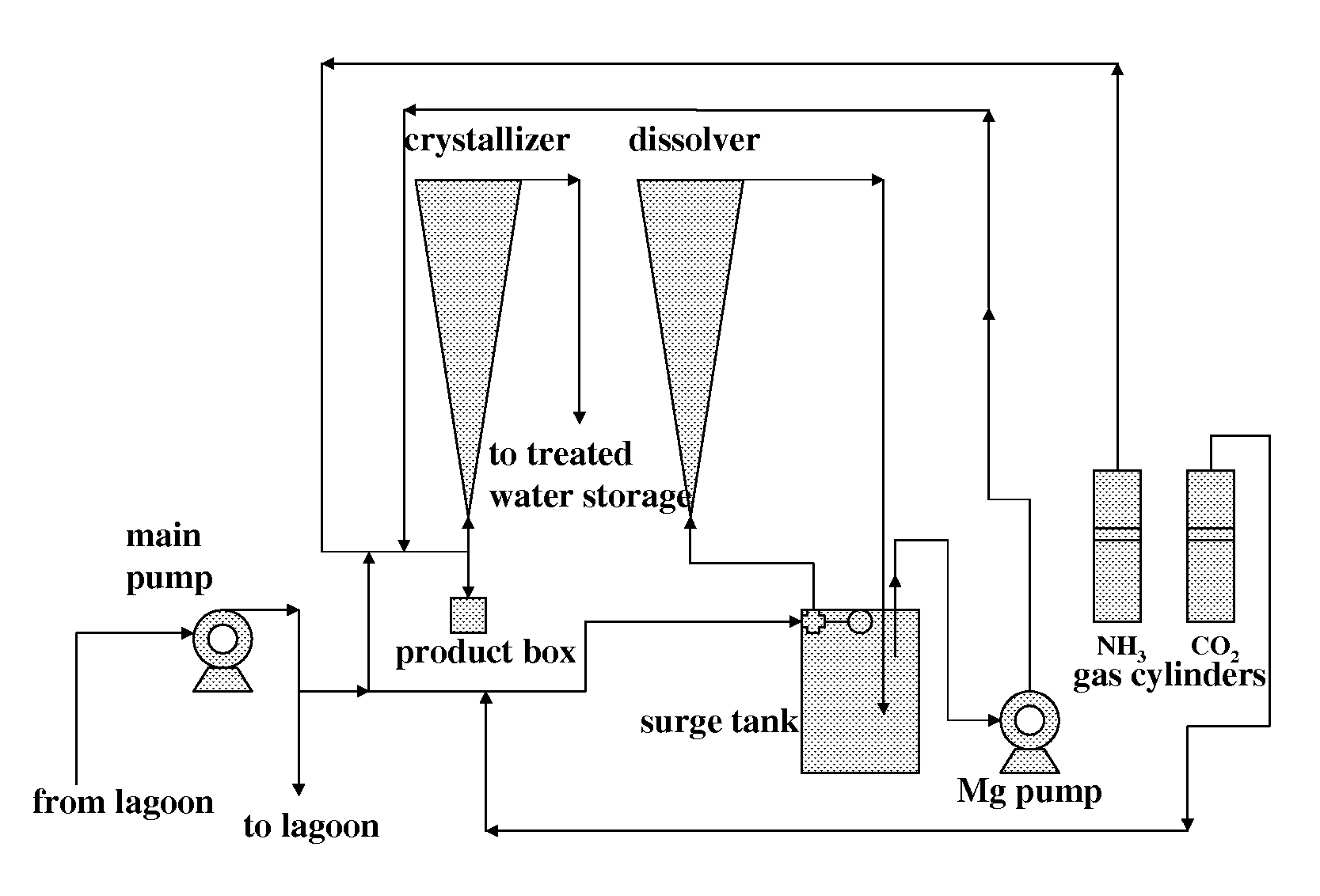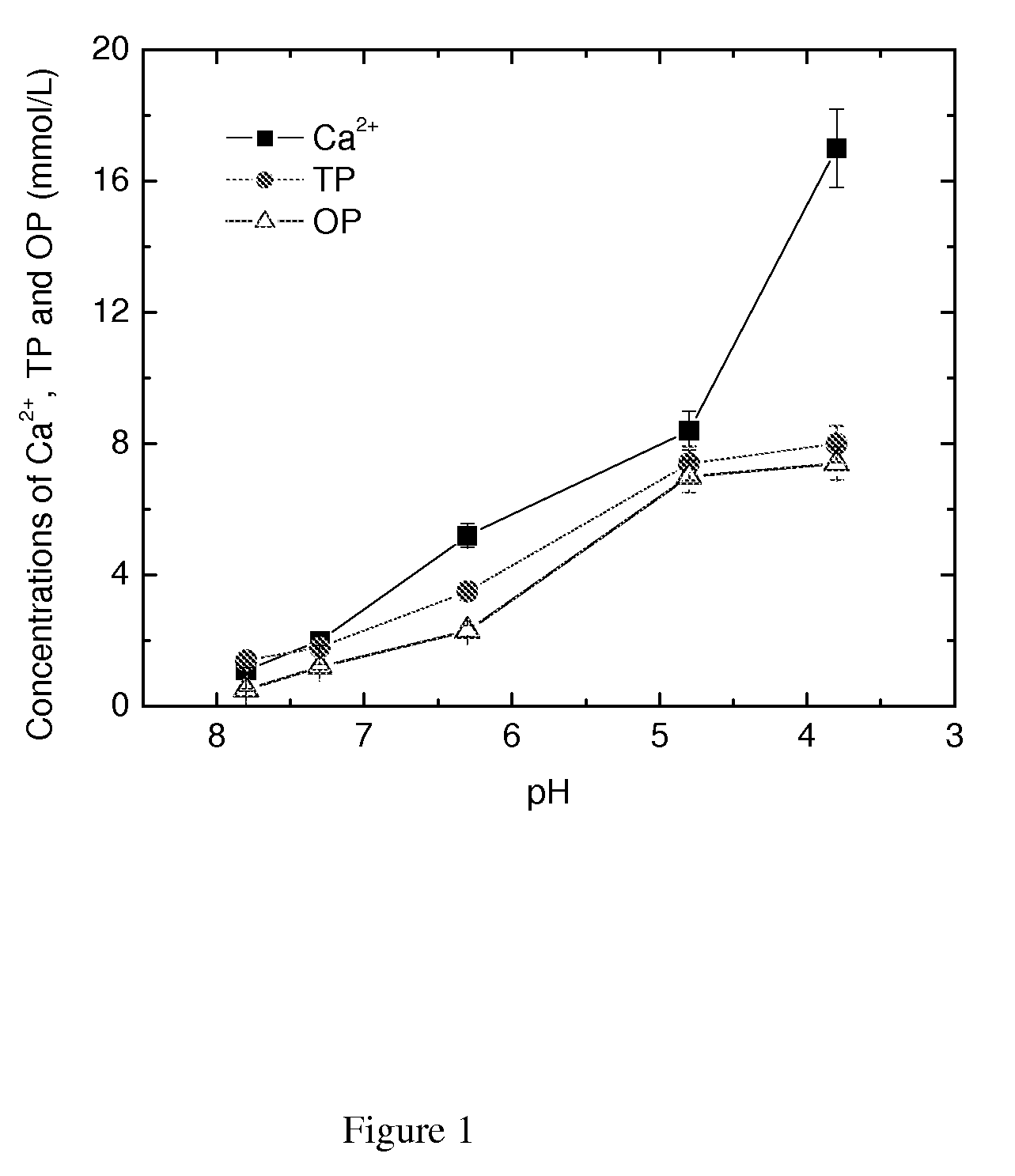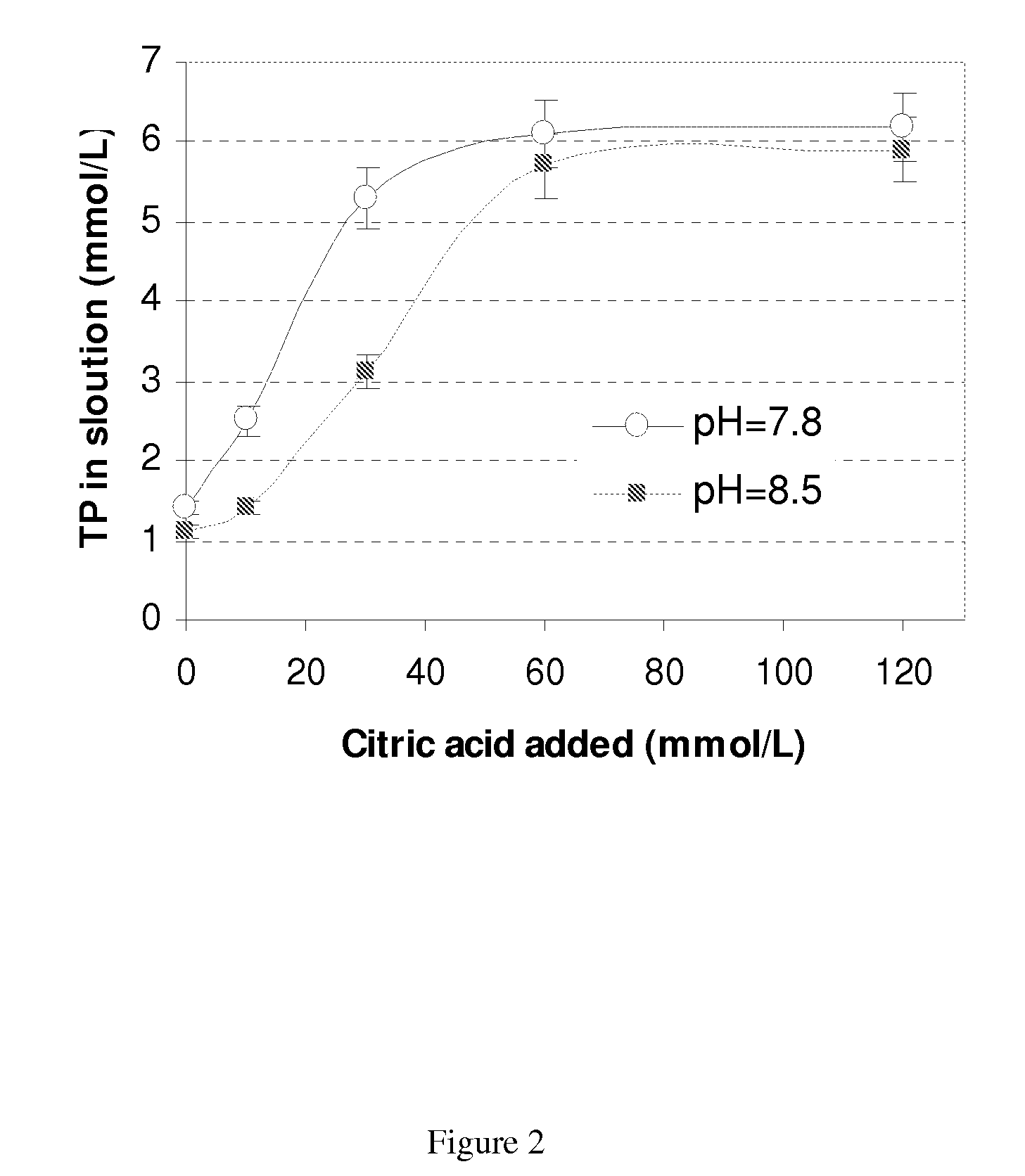Compositions and methods for wastewater treatment
a technology of wastewater treatment and composition, applied in the direction of magnesium compounds, water/sewage treatment by ion exchange, wastewater, etc., can solve the problems of dissolved phosphate in various effluents, inability to achieve practical and efficient recovery by current methods, current demand and exploitation,
- Summary
- Abstract
- Description
- Claims
- Application Information
AI Technical Summary
Benefits of technology
Problems solved by technology
Method used
Image
Examples
example 1
(Phosphate P was Found to be Releasable from Dairy Effluent, and Further was Found to be Recoverable as Struvite (magnesium ammonium phosphate hexahydrate or MgNH4PO4.6H2O)
Materials and Methods
[0043]Dairy effluent. Dairy wastewater consisted of effluent, after anaerobic digestion (AD treatment) and solids separation, from / at a dairy farm in Whatcom County of Washington State, and was used in all of the experiments. In the raw effluent, the total phosphorus (TP) content ranged from 6.7 to 9.0 mmol / L (or 208-279 mg / L). The calcium and magnesium ranged from 12.0-26.0 mmol / L (or 480-1040 mg / L) and 5.0-16.0 mmol / L (or 121-389 mg / L), respectively.
[0044]Treatments for the dairy effluent. Three types of exemplary treatments were performed to liberate P from the particulates in the dairy effluent, including acidification, citric acid treatment, and ethylenediaminetetraacetic acid (EDTA) treatment.
[0045]Acidification. The first type of treatment was acidification of the effluent samples. Acid...
example 2
Phosphorus was Removed by Struvite Crystallization in Various Livestock Wastewaters
[0071]Overview. Large dairies and swine farms using flush systems for animal waste management face increasing restrictions on over-application of phosphorus to cropland. The wastewater that the flush systems produce contains phosphorus, and is stored in lagoons for recycling in the flush system and for irrigation onto the cropland. Dairy wastewater in some cases is treated in digesters in concentrated form to produce biogas and reduce odor before being irrigated onto cropland. Phosphorus, is sometimes present in the wastewater at concentrations high enough to exceed the crops' ability to take it up. In such cases, phosphorus accumulates in soil and may eventually saturate it. Concerns have arisen that phosphorus in saturated soils may move into surface waters, where it could cause environmental harm. As a result, the swine and dairy industries are considering means for reducing the phosphorus content ...
PUM
| Property | Measurement | Unit |
|---|---|---|
| Concentration | aaaaa | aaaaa |
Abstract
Description
Claims
Application Information
 Login to View More
Login to View More - R&D
- Intellectual Property
- Life Sciences
- Materials
- Tech Scout
- Unparalleled Data Quality
- Higher Quality Content
- 60% Fewer Hallucinations
Browse by: Latest US Patents, China's latest patents, Technical Efficacy Thesaurus, Application Domain, Technology Topic, Popular Technical Reports.
© 2025 PatSnap. All rights reserved.Legal|Privacy policy|Modern Slavery Act Transparency Statement|Sitemap|About US| Contact US: help@patsnap.com



